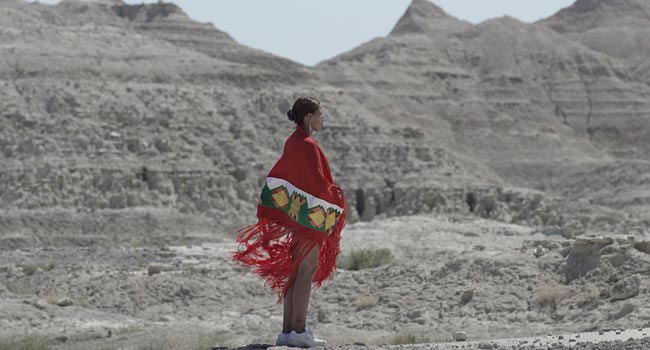
The camera utilizes stunning perspectives to showcase it's characters. If Malick shot a documentary, it would look like this.

The camera utilizes stunning perspectives to showcase it's characters. If Malick shot a documentary, it would look like this.
Being someone who has lived in South Dakota for over twenty-years, one would assume I would know a fair amount about the Pine Ridge reservation located near the Badlands of South Dakota, but the truth is most people (even those from South Dakota) know little about the area. This is the very point that the documentary opens with as a voiceover from an area native explains that most people still think people on the Indian reservation of Pine Ridge live in tipis instead of modern houses. Although people here do have houses, Pine Ridge is far from a clean or ideal place to live in as it encompasses one of the most impoverished counties in the nation.
Anna Eborn’s documentary follows several residents of Pine Ridge through their daily lives on the reservation that is both poverty stricken and crime infested. People featured here share their hopes and dreams which range from moving away from the reservation at the first opportunity to sadly having no dreams at all. Instead of bringing people into a professional studio and conducting traditional interviews with its subjects, the Swedish director wises opts for a fly-on-the-wall approach that at times makes you forget you are even watching a documentary. This candidness is what makes Pine Ridge such a fascinating watch.

Easily the most mesmerizing part of the documentary is the cinematography, which successfully captures the atmosphere of the surroundings. Some shots show just how impoverished areas of Pine Ridge are like when a family picks up garbage bags full of trash off their property. On the flip side, the exquisiteness of the land is exposed when a few ranchers venture off into the countryside to shoot their guns and ride horses before the sun sets on the open prairie. There are some shots found within the documentary that resemble the masterful work of Terrence Malick (especially from his To The Wonder) as the camera utilizes stunning perspectives to showcase it’s characters. If Malick shot a documentary, it would look like this.
Given the extensive sensitive history in the area between Native Americans and the government, Pine Ridge could have very easily been politically charged, but it stays clear of any political agenda. The goal here was not to teach a history lesson, it largely assumes you know about the history of the U.S. government taking away the land which belonged to the Sioux Indians. Instead, the documentary displays a rather grim slice of life on the Pine Ridge reservation where the audience is free to come to their own conclusions.
Someone in the documentary describes the difference between tumbleweed and corn is that the tumbleweed has no roots and therefore blows around in the wind with no particular direction, whereas corn has deep roots into the ground and knows it will grow high into the sky. Pine Ridge has people who are tumbleweeds and people that are corn and both types are found within the film. What some viewers may not care for about Pine Ridge is that the documentary is much like tumbleweed; traveling in no obvious direction and free from any specific plan. Others will appreciate how the documentary did not force any direct viewpoints at them in an attempt to gain a certain reaction. Mark me down as being in the latter category.